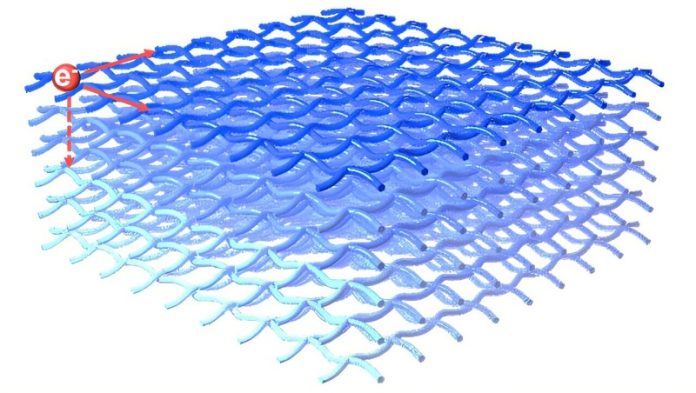
A team of international researchers has successfully created a new type of highly conductive 2D polymer, opening the door to exciting new applications in electronics, sensors, and flexible technology.
The discovery, published in Nature, represents a major step forward in conducting polymer research.
What are conducting polymers?
Conducting polymers, like polyaniline, polythiophene, and polypyrrole, are special materials that can conduct electricity.
They are lightweight, flexible, and inexpensive, making them promising alternatives to traditional semiconductors and metals.
However, these materials have always faced a big challenge: electric charge doesn’t flow efficiently between polymer chains, limiting their usefulness in real-world applications.
To solve this problem, a research team from the Chinese Academy of Sciences, TU Dresden, the Max Planck Institute, and CIC nanoGUNE BRTA developed a new two-dimensional polyaniline (2DPANI) crystal. This breakthrough improves charge transport, making the material much more conductive than before.
The team created ultra-thin layers of 2DPANI using a special process called 2D polymerization, which involves growing the material on a water surface. The resulting crystal measured 130–160 square micrometers in size and had a thickness ranging from tens to hundreds of nanometers.
The key to its high conductivity is its unique structure. The 2DPANI crystal has columnar π arrays and a special rhombohedral lattice, allowing strong electronic coupling between layers. This means that electric charges can move more freely within the material, significantly boosting its conductivity.
The newly developed polymer demonstrated a Drude-type conductivity, meaning it behaves more like a metal than a traditional polymer. It achieved an electrical conductivity of 200 S/cm, which is remarkably high for a polymer.
The study also found that the material’s vertical conductivity (out-of-plane transport) actually increased as temperatures dropped, a property typical of metallic behavior. This feature could be extremely useful for next-generation electronic devices.
This discovery solves a major problem that has long limited conducting polymers: poor charge transport due to weak structural ordering. By improving how charge moves through the material, this research brings us closer to using conductive polymers in real-world applications.
In the future, this material could be used in electrodes, electromagnetic shielding, sensors, and flexible electronics, offering lighter, cheaper, and more adaptable alternatives to traditional materials like metals and silicon.
This breakthrough marks an exciting step forward in materials science, bringing us closer to smarter, more efficient electronic devices.



